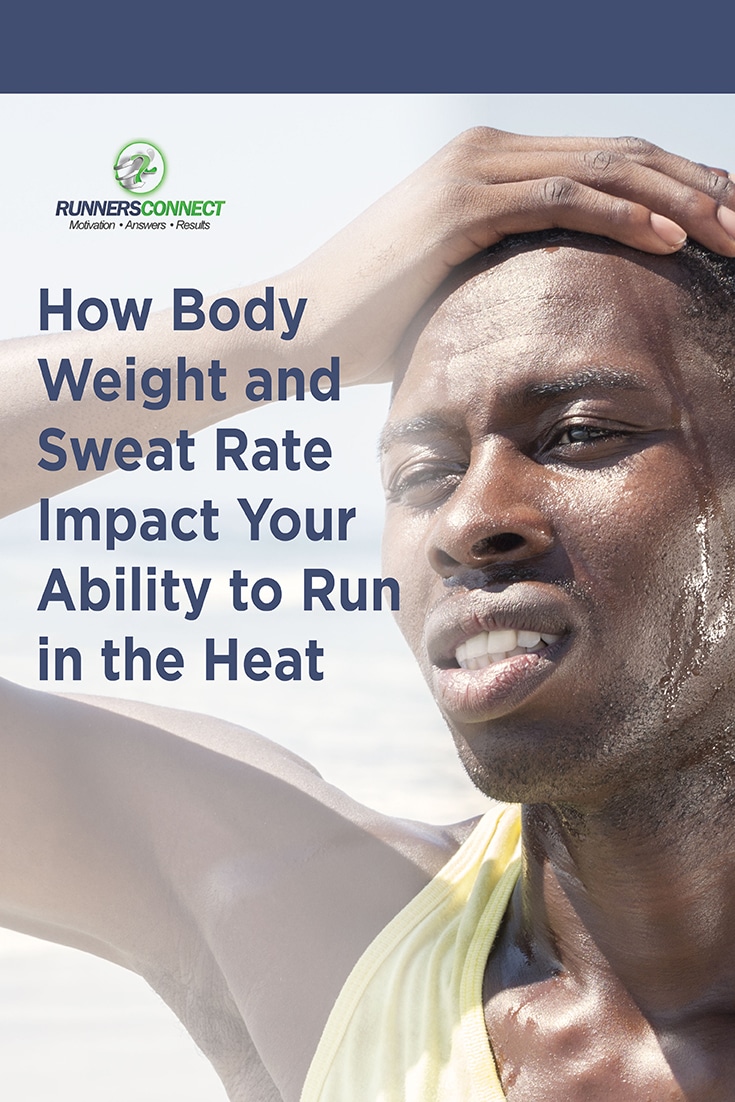 Heat regulation during exercise is a very relevant topic this time of year.
Heat regulation during exercise is a very relevant topic this time of year.
In previous articles, we’ve looked broadly at thermoregulation—the five-dollar word for how your body handles heat production—during exercise, but today we’re going to examine one specific facet of running in the heat: the differences in heat management between males and females.
Men and women differ physiologically in a number of ways.
Race times are the most obvious among these, but women often suffer from different injury patterns than men, have, on average, different body composition, and also have small biomechanical differences in running form.
Do any of the differences between the sexes have an impact on handling the heat during a hot run?
At the meta-level, what does this data tell us about running in the heat that all runners can use to their advantage?
Running in the heat for men and women
On first inspection, there are a number of biological differences between men and women that should have a significant impact on thermoregulation during exercise.
These were discussed in a 2001 review article by Hanna Kaciuba-Uscilko and Ryszard Grucza of the Polish Academy of Sciences.
For starters, men tend to be taller, heavier, have lower body fat, and sweat sooner and more profusely during exercise in the heat.
The differences in body size should confer an overall advantage to women: being smaller means that the ratio of your skin surface area to your body mass is larger—this allows for better radiation of excess heat.
On the other hand, an earlier and stronger sweating response, plus lower body fat, should both improve heat loss in men.
How do these differences stack up when it comes to actually measuring heat management during exercise in the real world?
Measuring heat management during exercise
A 1995 study by researchers at the Georgia Institute of Technology studied 12 well-trained male and female marathon runners during a 25-mile simulated race on a hot and humid day. Core body temperature was measured during and after the run.
The researchers found that the women had a lower body temperature in the final six miles of running, and lost less fluids to sweat during the course of the run.
The smaller body mass of the women likely allowed more efficient heat loss, necessitated less sweating, and thus less dehydration (which itself can cause problems with heat management).
The findings of this study are particularly useful because the authors were careful to make sure that the men and women were all running at the same intensity relative to their fitness—heat regulation is strongly dependent on individual effort level, so a very fit runner will be able to handle, say, eight-minute mile pace much easier than a less-fit runner on a hot day, because that speed is a lower intensity relative to his or her fitness level.
However, women don’t have the upper hand in all situations.
As pointed out by physiology researchers Samuel Cheuvront and Emily Haymes in a 2001 article on heat tolerance in marathon runners, women’s smaller size and lower sweat rate could work against them in dry, extremely hot weather.
Conclusion and how you can apply this research
- When the ambient temperature is hotter than your skin temperature, having a high skin surface-area to mass ratio actually works against you, and lower sweat rates can hamper your ability to stay cool when dry air is sapping away all of your perspiration. Fortunately, this only comes into play on very hot days, when the air temperature is close to or over one hundred degrees.
- Cheuvront and Haymes also cite research showing that, once you control for factors like body size and fitness level, women and men handle heat very similarly under most conditions, a point agreed to by Kaciuba-Uscilko and Grucza.
- In most real-world situations, women will maintain the same core temperature as men when faced with similar workloads, given equivalent body sizes.
So, there are a few situations where gender might make a difference in the heat: in hot and humid conditions, women as a whole might have a slight edge thanks to more moderate sweat rates and their smaller size.
In oppressively hot, dry conditions, men should (on average) have the upper hand with their higher sweat rates and larger body mass. Outside of these two extremes, and when effort level and body size are controlled for, there’s no significant difference in how men and women handle the heat.
Knowing this data, you can now adjust your race paces and performance expectations when racing in hot weather.
Adjusting your expectations and paces early can dramatically improve your performance and ability to handle the conditions.








